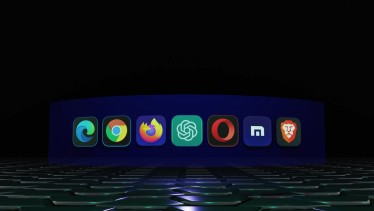Prior to the pandemic, the remote employee was an entity that managers rarely had to worry about, if at all. Occasionally, an employee would work from home, if there was something non-health-related that kept them housebound. Throw in the odd freelance employee who worked from their laptop, and there you had your remote team - small, manageable, and largely out-of-mind.
The pandemic changed that - perhaps permanently. Now, many managers have an entire remote team to oversee, a prospect they may have to get used to. According to a Global Workplace Analytics survey, 80% of full-time workers expect to work from home at least a few days a week after the pandemic lifts. Team leaders and managers have now had a year to prepare for this seismic shift in work dynamics - but a seismic shift it is, nonetheless.
One concern still on many managers' minds is security. They've learned to deal with the motivational and communicative arm of managing remotely, but what about data security? How do you keep a remote, dispersed team working on disparate devices and networks safe from data breaches, malware and other threats? The answer: education, protocol, and quality software.
It Starts with Education
As with any teamwide initiative, revamping data security starts with education. Why is it important to keep data safe? What are the individual and organizational threats posed by malware, ransomware, IP theft, and data loss? And what are the preventative measures and actionable steps employees can take to increase security.
If your company allows BYOD (Bring Your Own Device) for remote work, have comprehensive policies in place for storing and protecting business-related data. And if your employees are allowed to work away from home networks, require them to use a reliable VPN.
Invest in Endpoint Security
Put simply, endpoint security is the practice of securing end-user devices like laptops, phones and desktops. Think of your network as the office - filled with sensitive data, proprietary information and workflow tools - and your employees' end-user devices like the doors. It's your job to keep those doors locked and alarmed, as devoid as possible of exploitable vulnerabilities.
Endpoint protection should be part of your overall antivirus efforts. In addition to providing your team with Malwarebytes antivirus software to keep their devices safe, invest in the company's endpoint security as well. It leverages emerging technologies like machine learning and AI to deliver reliable, proactive server protection against malware and data breaches. And it's lightweight enough that it won't strain end-user productivity.
Validate Your Users with Multifactor Authentication
Validation should be part of your overall efforts to protect data. You don't want just anyone gaining access to your servers and info. A popular validation method is 2-factor authentication (or 2FA, for short). Essentially, 2FA adds an extra step to the password process. Not only do employees have to enter their password, but once they do, a unique code is sent to their personal device, which they must also enter. This extra, person-specific step has proven to be a significant deterrent against cyber intruders.
If you're all of a sudden managing a far-flung team of employees and you're unsure how to keep everyone - and the company - safe, start with these three tips. If you need a quick mnemonic, think about it this way: It's all about EVE (Education, Verification and Endpoint security).




















